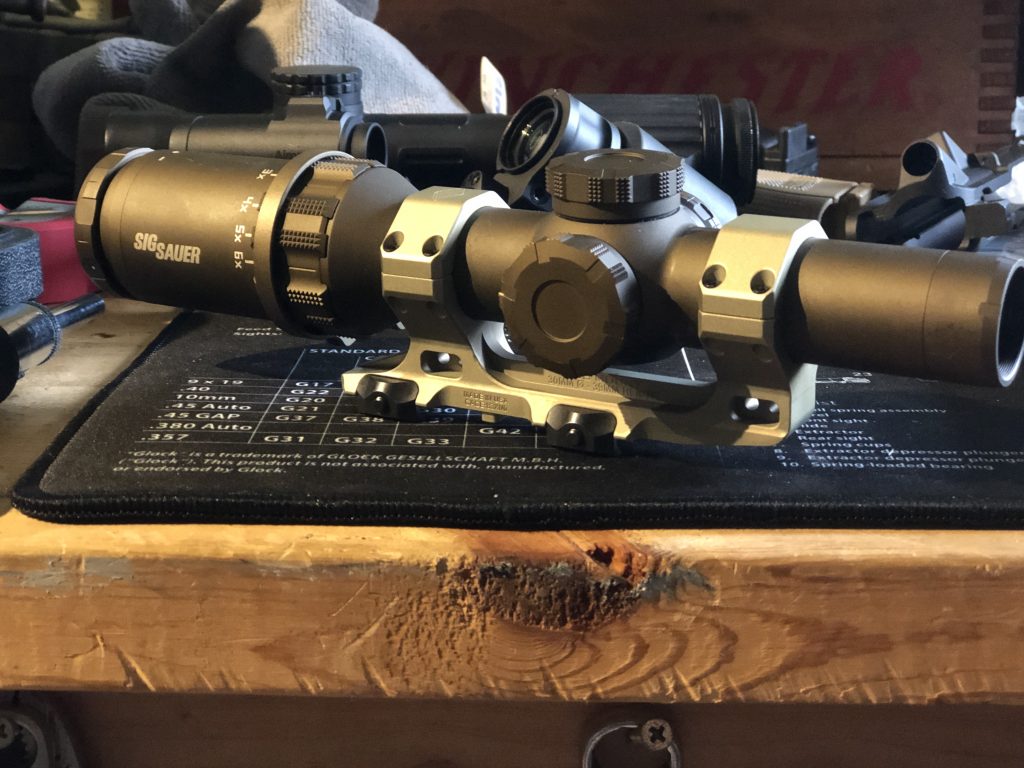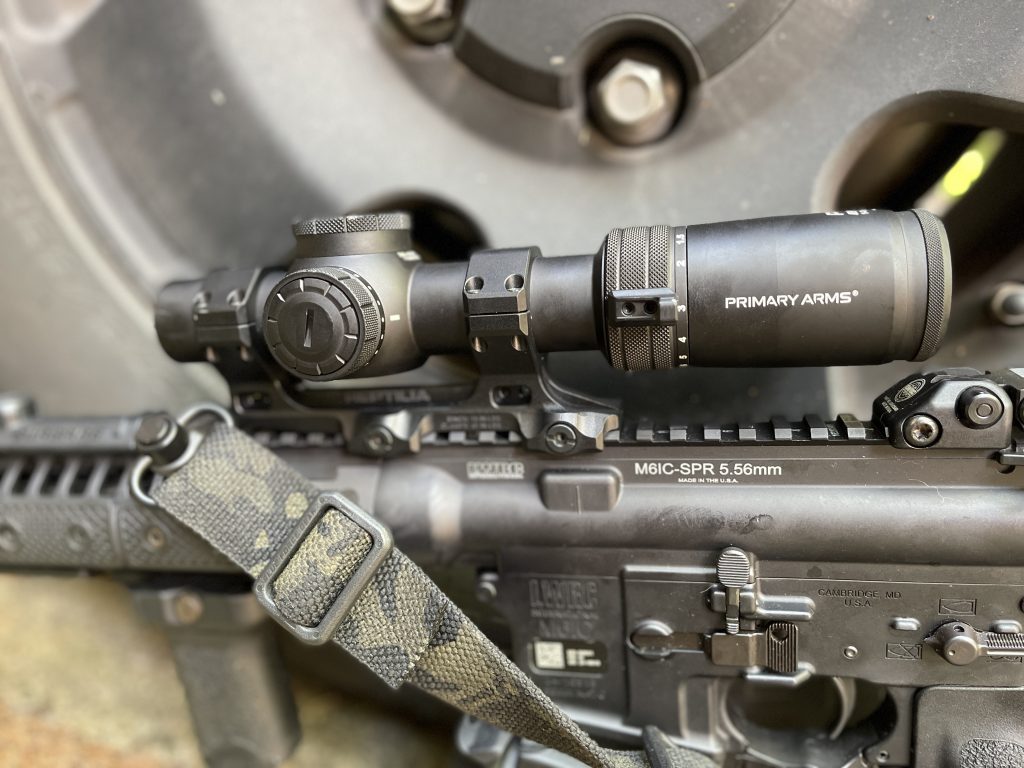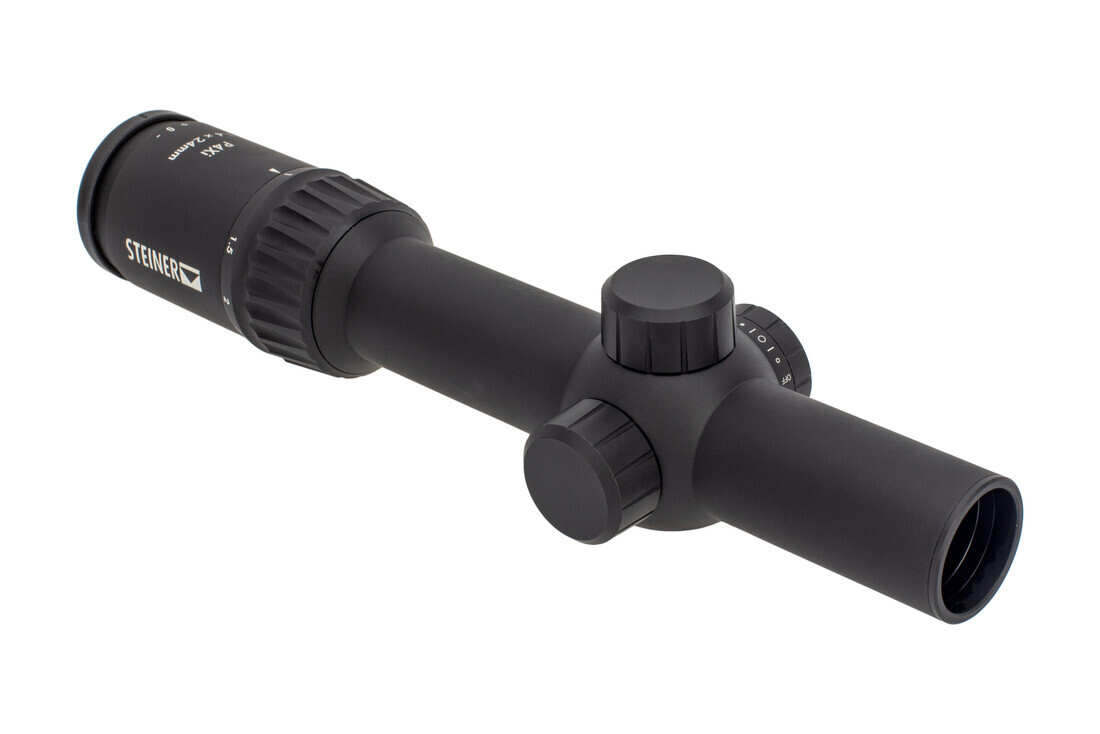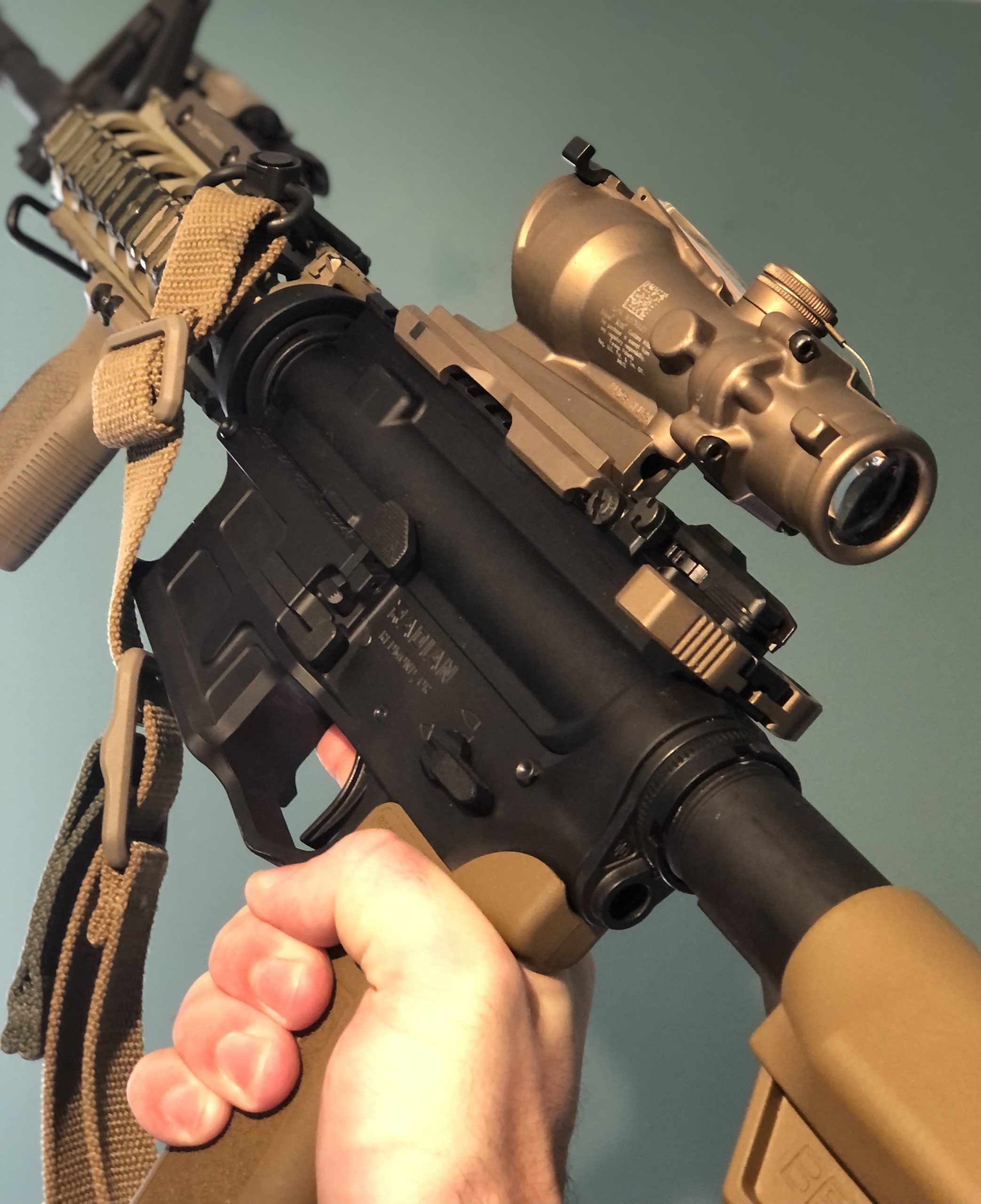
I wrote a piece awhile back covering some of my favorite RDS optics, and the reasons why I use them in various roles. I like trying everyone’s way to build the mouse trap to see if someone has unlocked a feature that really is worth adding.
In red dots, that’s rare, building a red dot is formulaic at this point.
But in magnified optics, considering the two focal planes, multitude of lenses, and variety of reticles you can combine to make them, the formula is far from set.
With that in mind, we will look at a few and where they go in the optical hierarchy. I’m going to cover a range of price options, capabilities, and where I believe fit most comfortably in finding a rifle to partner with.
If I don’t mention an optic you happen to like from a quality name, Kahles for example (I haven’t shot with them, ever), I won’t comment beyond that I know certain people like the sights and they’re people whose opinion I would trust in this space.
1. The Vortex Razor HD Gen III 1-10x

We’ll start with the optic I believe sets the current standard for what an LPVO can do, the Razor III 1-10x.
Vortex, seeing their competition filling the 1-8x field with strong offerings, leaped that whole space entirely and set about making a 1-10x that would be able to drop into the place of their Razor II-E 1-6x and provide a dramatically improved feature set. When I say drop in place I do mean literally, the intention was to be able to pick an identical optic mount in 34mm, instead of 30mm, and put the Razor III where the Razor II was.
The length of the optic didn’t change. The weight of the optic didn’t change. The eye relief changed by a small margin. The optic housing layout changed by a small margin with the control surfaces moving forward along the main tube. The maximum field of view remained the same (listed as improving by .8′) while the minimum at maximum magnification is only 9′ smaller for the 4x extra magnification power.
In practical terms, Vortex succeeded. Placing the Razor III with its ocular lens where the Razor II’s was prior would likely place it appropriately. The mount may end up one or two slots off, with another one to adjust for the difference in eye relief. The scope will occupy the same real estate as its predecessor, unlikely to disrupt any other ancillary gear you have placed on the rifle. Lights, sling mounts, lasers, etc. are probably just fine where they were.
Vortex saved some sharp end folk and their armorers a lot of headache with this.
With this swap (or purchase) the user gains,
- Four Extra Magnification
- The rifle optic now sees as far as an early GWOT sniper scope or standard binoculars
- Front Focal Plane Translucent Reticle
- Reticle is now always scaled to the target image
- Reticle has several additional measurable data points for ranging and a BDC relevant for 5.56 NATO, 7.62 NATO, and likely 6.5 and 6.8 rounds
- Reticle center is translucent and allows a target image to be seen through it, improving sight picture
- Daylight/RDS Bright Illumination
- The translucent reticle illuminates brightly, something other FFP LPVOs have not been able to achieve
- The brightness matches excellent SFP offerings, like their own Razor II-E, and allows the Razor III to offer that full functionality
- MRAD or MOA Options
- In addition to the drop in place functionality for their own Razor II’s, the Vortex design team considered it as an upgrade for several legacy systems
- The MOA variant can be used as a simple upgrade for systems previously running an ACOG TA31, TA11, or Elcan SpecterDR 1-4x or 1.5-6x
- The MRAD variant can be used as a simple upgrade for more precision systems running Leupold Mk4 2.5-8x MR/T or 3.5-10x LR/T optics
The major limitation on the Razor III remains its price tag, Amazon has both variants at $2499. But for that price you get the LPVO with the greatest magnification range and one of the best reticle systems, with the best FFP illumination system, available on the market. It is the LPVO standard setting for the commercial market that successfully spans both the FFP and SFP roles. This optical flexibility allows the rifle and its user to be more flexible in their roles as well.
The Razor III is my current standard for what a ‘perfect’ general purpose rifle optic should offer.
2. The Sig Sauer Tango6T S-VPS 1-6x (also the Razor HD Gen II-E mentioned above)

When I stated above that there is no formula set for LPVOs, due to the available variations, that isn’t quite the case. Just as a myriad of red dot designs are basically Aimpoint T1/T2 clones, the formula for a stable LPVO goes thus: 1-6x, 30mm tube, 24mm objective lens, SFP, daylight bright illumination via fiber optic w/ wire reticle, simple usable reticle at 6x.
This is the Squad-Variable Power Scope, chosen by SOCOM to join the Razor II’s (with a nearly identical build), and I favor it more than the DVO or SDM optics that also made the military cut. Those Front Focal Plane optics have their place and roles but are more specialized in their spots atop general issue M4A1’s and M110A1’s respectively.
The S-VPS offers the user the following,
- Formulaic Effective Range Magnification
- The S-VPS offers the preferred 1-2x magnification for every 100 yards of effective range that most rifles have in any major caliber
- Even for short barreled rifles or low velocity systems like .300BLK or 7.62×39 this will be highly usable effect
- SFP Clarity and Illumination
- Due to the fewer lenses required to make a Second Focal Plane Optic the sight picture is brighter and clearer in general
- The wire reticle, as opposed to etch glass, is able to be constructed very robustly
- Using fiber optic cable and an LED the center aiming point of the wire reticle can be illuminated far brighter and with more energy efficiency that front focal illumination off of an etched glass reticle
- The BDC, while tuned to a specific round at 6x, is not the primary feature of the optic and doesn’t take up an unreasonable amount of internal space in the sight picture
- A Red Dot +
- The S-VPS can be treated like a red dot + variable magnifier in most senses of use focusing its effectiveness on precision within the flatter trajectory of the bullet flight
- The M855A1 BDC reticle in the S-VPS, like the earlier JM-1, is accurate to trajectory at 6x magnification for longer shots out of the M4A1 or other 14.5″ barreled 5.56 NATO rifles and will give useable holds for most calibers in most popular barrel lengths
- The clarity and simplicity of the system showcase that the LPVO can be run in close as well as at distance
The S-VPS showcases one of the finest examples of a simple well executed LPVO that retains the majority of the advantages present in a red dot. The price for one, or a similar Razor II-E, are in a far more agreeable $1100 to $1400 range.
That makes putting one on onto a rifle a great deal more manageable and giving you a great deal more spend efficiency. The excellent precision and ranging capabilities of FFP offerings are omitted, but in their place is a robust simplicity supporting the shots you will take far more often.
3. Primary Arms Compact PLx

The review on this 1-8x is recent enough that I will simply link it here.
To summarize however, the PLXc exhibits some of the best qualities available in a modern LPVO optic with excellent glass, field of view, and reticle design. This while both smaller in size and lighter in weight than most competing offerings. These specifications are wrapped into an otherwise very standard 30mm main housing and 24mm objective lens, keeping mount compatibility very high.
To summarize,
- 1-8x Front Focal Plane
- The magnification range allows it to cover the effective ranges of all intermediate and battle rifle calibers
- FFP keeps target ranging information and BDC consistent
- Detailed etched glass reticle system
- ACSS Reticle System
- The ACSS Developed by Primary Arms incorporates a center Chevron with a Horseshoe surrounding, this combination allows the user to bracket and shoot at a target quickly through the full magnification range and with or without the contrasting illumination on under most circumstances
- The Chevron gives a true fine aiming point, something a dot can struggle to and a crosshair can sometimes occlude
- 3 Reticle offerings with a generalized BDC in Yards, Meters, or a Mil-Grid reticle for precision work
- Size and Weight in Common Profile
- At 16.95oz. and 9.28in. long it is about 8% shorter and 21% lighter than the Razor II or III, with its magnification range in the middle
- Lighter weight, especially while retaining or enhancing what previous optics have offered, make the Compact PLx formidable
- 30mm optic body and 24mm objective lens make the optic compatible with most two ring one piece mounts and accessories
About the only thing I caution on, as I noted in the review, is the limit to the Compact PLx’s illumination. If you require a red dot bright center reticle look at the previous two or the following suggestion. They sell for $1499 at present.
4. Dot + Magnifier


If you believed this was going to be all LPVO’s, not so fast.
The RDS remains one of the best solutions for any firearm, including a carbine, to put a durable and reliable optic on top. Red dots are often paired with magnified optics as a backup, an offset/second zero, or a system to be utilized with passive aiming and night vision devices.
But what to do if you need magnification and it is your primary optic?
Easy, add a magnifier.
While the magnifier solution does not offer all the added flexibility of the LPVO, and it honestly was one I didn’t like very much until I shot with it enough, I favored the ACOG, it does offer a significant portion of those advantages.
A flip-to-side (or up, or down, or wherever out of the way) magnifier turns your 1x reflexive system into a 1x/3x, or 5x or 6x if you get the newer magnifiers from EOTech or Aimpoint, giving on demand magnification. My personal preference for these remains the 3x options. That 1x also keeps the forgiving eye positioning of the red dot, something the LPVOs and prisms do not.
Sticking with a red dot suggests that you are prioritizing speed. The red dot is still the fastest option for an aligned sight picture. LPVOs and anything with a restricted eyebox, including these magnifiers, will remain have presentation speed and position limits.
The FTS+QD magnifier option remains a strong one for sighting a carbine.
- Simple
- The Red Dot is simple, reliable, and proven optical system, that simplicity is carried into the magnifier too
- No complicated scaled reticles or focal planes to worry about (these are effectively front focal plane), simply choose whether you want a 1x or a greater than 1x target image
- Certain reticles will offer basic holds if desired
- Robust
- The simplicity in the construction of both the dot and the magnifier allow them to be made very durably
- If one or the other component breaks it is simpler to replace or repair, the likelier component to fail is the magnifier and if it does it can be removed without taking the rifle out of action at all
- On Demand
- The Flip-to-Side and Quick Detach features that are included with the magnifier, I would avoid magnifiers without these features, make using or not using, removing, and adding the magnifier onto the rifle all very simple
- This simplicity allows the user flexibility on their rifle
- You may use the magnifier all the time at the range but remove it at home for the home defense gun
- You may be shooting using NODs and the magnifier is interfering, even flipped, so just QD it and stow it
- Cost
- The cost of a premium tier red dot and magnifier combination only touches the middle tier of the quality LPVOs
- The two parts be acquired separately to space out costs
- More budget friendly and reasonably durable options exist much cheaper in the dot + magnifier options than in LPVOs
The Dot +Magnifier remains a flexible option with many advantages for most rifles and rifle users, the only limitations are the rudimentary on magnification range and reticle design. Cost for the highest end combinations top out at around $1500.
5. Steiner P4Xi

The Steiner’s spec list is not cutting edge anymore. In actuality, it is pretty much what S&B offered Delta when they made the short dot back in the late 90’s and early 2000’s. It’s two decades old.
But the great thing about that feature set is it’s really good for nearly any carbine. A red dot feature inside a 1-4x scope with a simple BDC. Most of what the SVP-S and Razor II-E offer, but a little smaller, a little lighter weight, and significantly lighter on the wallet for excellent glass.
The P4Xi is an ideal entry optic if you’re entering the LPVO market for the first time. Top quality construction and feature set under $900. You can put it into a mount and onto a rifle for right about $1000, making it line up nicely in the rule of 1:1 spending on the less expensive duty quality rifles when paring them with optics.
If I needed to put together a rifle package on-the-cheap, with as much flexibility as as I can offer the user, the P4Xi would be the optic. Even if a user ends up wanting more magnification, reticle type, focal plane, etc. in the future, the P4Xi will undoubtedly cover down on most of the end user’s immediate requirements.
- Simple
- SFP
- 30mm main tube
- Bright Illumination
- Simple BDC
- Cost
- Under four figure buy-in to an excellent quality LPVO
- Less expensive options tend to further compromise on glass quality, internals quality, and aspects that can negatively influence durability
Honorable Mentions



The ACOG
The GWOT OG of nigh-indestructible scopes, the ACOG remains a popular and affordable (compared to many LPVOs) way to get an absurdly resistant and capable optic with some magnification behind it.
The Gen2 options, like the TA44 and TA50, are as small as red dots and offer the non-battery illumination, solid reticle, magnification, and construction.
While I’ll say LPVOs offer a far more flexible sight, it is difficult to outmatch the ACOG for simple and durable.
The EOTech VUDU
Now the VUDU is a line, and I was underwhelmed by the 1-6x offering. It felt like more of a working and commercially available proof of concept than a serious optic.
The FFP optic with the classic reticle layout (circle and “dot” center) was cool to do, but the uncapped and unlocked turrets beside the limited illumination hampered it keeping up with other 1-6’s
The 1-8x offering fixed many of these concerns. They capped the turrets, went SFP, and produced a strong contender for the SFP optic space. The only reason it didn’t make it into a ranked slot is the illumination control. The three button system they use is functional, but not as quick or as intuitive as the locking illumination design on the S-VPS.
Their new 1-10x looks very promising as well, I have not shot with it yet but I liked the production model features, especially the capped windage turret and locking elevation decisions, for something that can easily support the DMR/Urban Precision role also. The reticle offerings reflect this.
The magnified optic field is substantive and deepening with quality options coming out from manufacturers rapidly. These are just good starting points on the search.



